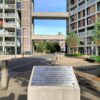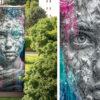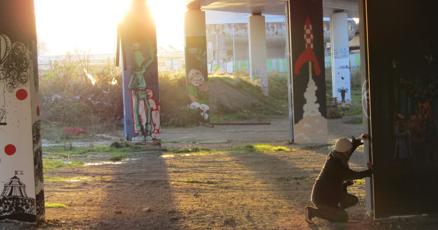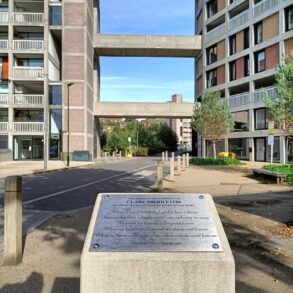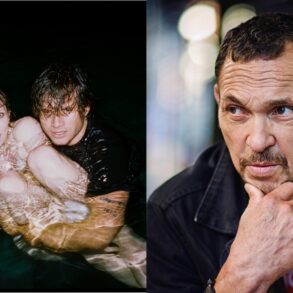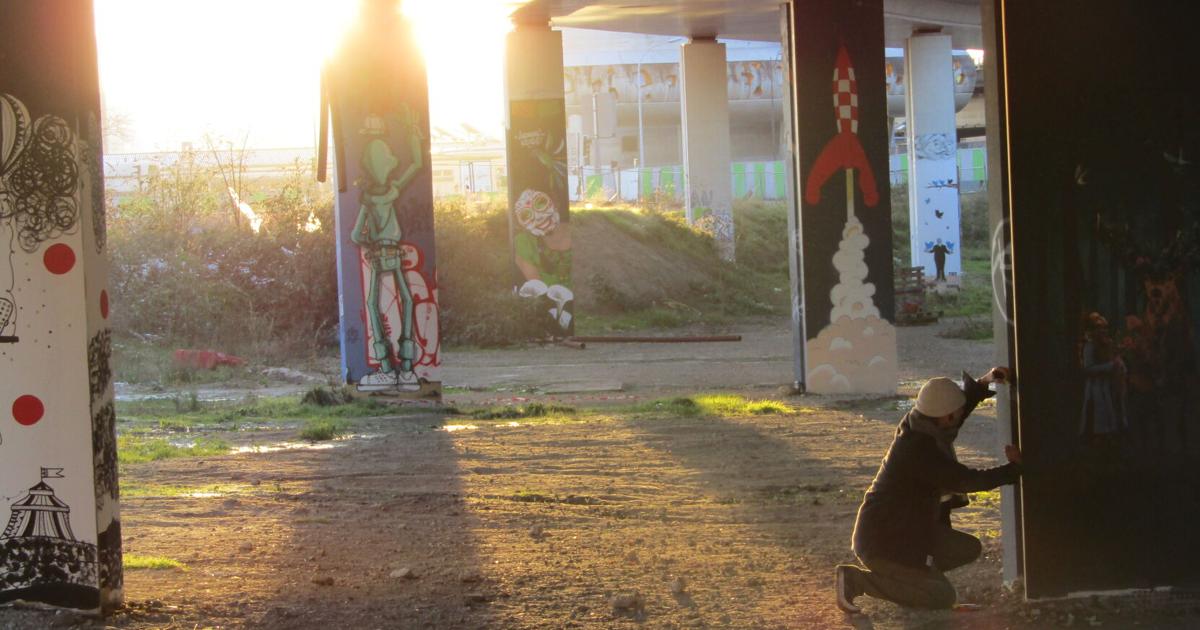
We didn’t know each other when we slipped past that chain link fence. Not really. A month is nothing in the grand scheme of things and when you’re going through the growing pains of living in another country, it means even less. But we all signed our names under that highway on the edge of Paris, and I like to think that means something.
I never thought I would get a chance like this, to spend time in a place so different from my own home, to spend time with other students getting course credit for exploring the haunts of Paris, both well-known and obscure. Four years of college are just about finished, and I’ve seen more of the world than the past two generations of my family. I’ll graduate in a few days now. I won’t see any of these people again. And yet for a moment, a month, an evening, a single second of passing a spray paint can from one hand to another, there was an understanding. It didn’t matter who we were, when we were surrounded by decades of art left under a street overpass with others who yearned for that same connection to see it. We were simply each another person hoping to be remembered. To leave something behind besides cigarette butts and muddy footprints.
In a city like Paris it’s easy to feel small. The city is ancient in a way that folds your head down and weighs heavy on your shoulders. Its rhythm is a practiced one that comes from a century of different feet walking the same metro steps, generations of the same food vendor on the same corner shouting the same words. But there are cracks in between the choking history of it all.
On a dreary day when the rain misted softly on skin, a day when the Louvre is closed, the pavilion becomes a community space. No longer are there throngs of people flocking to stare at a portrait of a woman from 500 years ago because they want to force themselves to connect with something they have been told they should. Instead, there are groups of old men warming their hands with coffee cups and mumbling about the morning paper to each other, heads bowed against the majesty of the sculptures above them, more invested in one another’s thoughts on local news. A group of teenagers congregate in one corner of the massive tiled plaza, occasionally attempting a new trick on their skateboards across the concrete in between people walking their dogs or talking on the phone as they hurry to their next bus stop. They are just as much a part of this city, of this history, as the scholars and philosophers that are immortalized in stone, watching over them from the rooftops.
My own Floridian hometown is only as old as the metro itself, before that just a swamp through the ages of Paris putting itself back together again over and over. I am unfamiliar with a place like this, in which strangers and citizens get folded into the same primordial arms. It shivers up my arms with the frigid air, reminding me that I do not belong. It feels the same as the goosebumps I get at night when I think of The Future. There was a time when I did not think I would ever end up here, learning French between stumbling apologies and thank you’s, practiced in avoiding the gap on the metro platform. There was a time when even this was a dream. But now I have a half empty bottle of spray paint sitting in my closet and old plane tickets folded into a sketchbook full of drawings from Parisian museums. And The Future is on my doorstep. It is comforting to recall the rhythm of Paris, and that weight of its history watching me. To recall how small I was, for that month, for that moment, for that afternoon spent surrounded by graffiti in a language I barely understood.
We didn’t know for certain what we would find, when we went searching for that space on Paris’ edge. It was damp, and had snowed the night before, and paint pens were hastily shoved in my pockets in hopes of simply an open wall and a moment to breathe without the normal bustle of strange citylife surrounding me. We ended up staying for hours. There was no end to the stunning work painted on stained concrete, lifetimes of practice left in an overgrown and forgotten corner of the city. Layers upon layers of art spread haphazardly up and down pillars and support beams, all glowing in the beginnings of a setting sun.
It didn’t matter that we were strangers to this place and to each other, not when we were the same as every single person gripping a spray paint can that came before us. Yearning for remembrance, for connection, and for that feeling that maybe, just maybe, everything could turn out okay in the end.
This post was originally published on this site be sure to check out more of their content.

